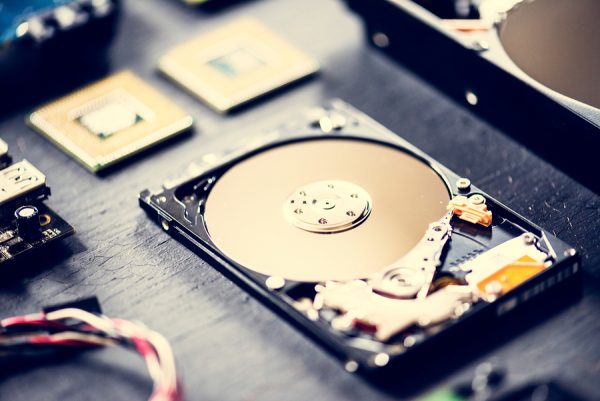
That outdated electronic device you or your company is ready to trash could still be filled with vital information. Printers, computer hard drives, phones, and copiers are just a few of the electronics that store information. In the wrong hands, there are names, phone numbers, addresses, passwords, tax information, and other details that are desirable.
PC World brought this to light in 2016. A data destruction firm purchased 200 storage devices online or through Craigslist and tested to see if they could access any data that wasn’t completely erased. In 78% of the cases, they were successful. An average of 6 out of 10 hard drives had financial information, resumes, and photos. Perhaps more frightening was that 11% of the hard drives still contained company emails and customer information.
When electronics reach their end of life, people don’t often stop to think about data destruction. Reformatting the drive isn’t always. Use these five tips to make sure your data is truly destroyed.
Make Sure Everyone Understands the Importance of Security
Make sure everyone in your company or office understands the importance of security. If you have one weak link, it could be disastrous for your company. Purchase computers and electronics that are designed to last. Use them until they’re definitely obsolete. If you’re replacing computers every year, you’re wasting resources and money.
Sit down with your staff and discuss security measures. If people take computers home, they need to follow a set of rules that protects the company from theft or information leaks. If it’s company policy to let staff purchase computers after an upgrade, make sure you’ve taken steps to wipe the drives clean. Once a staff member owns that computer, you have no idea where it could end up.
Encrypt Your Drives
When you’re saving files anywhere on your computer, make sure they’re encrypted. When the time comes to recycle your encrypted drives, you can use software that overwrites the encrypted data and deletes the key when it’s done. This is not a fool proof way to protect your data, but it can help.
Use Data Erasure Software
Don’t use your computer or devices reformat function before sending your electronics off for recycling. Data erasure software wipes hard drives and other drives. If you use one that requires Windows to run, you won’t be able to wipe the hard drive. You should look for data erasure software that’s saved to a USB stick and run from your USB slot, such as the software used by ERI.
Once you’ve run the software, try to get into the drives and search for information. There are computer programs that will run searches for you and see if anything is found. This second step is important. Understand that even if you take this step, it’s not a guarantee that the data will be impossible to retrieve. The only guaranteed ways are through degaussing and shredding.
Have the Electronics Shredded or Degaussed
Look for ITAD companies that degauss or shred hard drives. Degaussing involves destroying magnetic fields on a hard drive. Without the magnetic domain functioning, the information is gone. It is important to know that degaussing will not work on a solid-stage storage device or an optical device.
Shredding is a process where electronics are shredded into small fragments. The plastic and metals are sorted and sent to be melted down. After it’s back in a raw form, it can be used to make new products.
When you’re hiring someone to destroy your data, make sure you’re allowed to witness the destruction. If that’s not possible, you should ask questions. At the very least, you should be able to see where your electronic items are during every step of the recycling process. If a company wants to keep the process hidden from you, find someone else. If possible, have the data destruction done on-site so that you are there for the different steps and can see what happens.
Choose a Certified Company
Be smart when you’re picking a company to recycle your electronics. Look for companies that hold certifications from organizations like e-Stewards.
The e-Stewards certification is the highest certification one can hold when it comes to e-waste recycling. Anyone with this certification takes steps to meet all local laws, international e-waste laws, and NIST data privacy requirements.
The R2 Standard from Sustainable Electronics Recycling International is another certification to look for. Companies who hold R2 certification go through audits regularly to make sure they’re following the required procedures, taking safety measures while working, and documenting the steps they take when repairing and recycling electronics.
And most importantly, NAID is the gold standard for data destruction. ERI is the only ITAD and electronics recycling company in the country to hold all three of these certifications at all their facilities.
If you’d like to talk to an ITAD specialist about data destruction, call 1-800-ERI-DIRECT at any hour of the day or night.